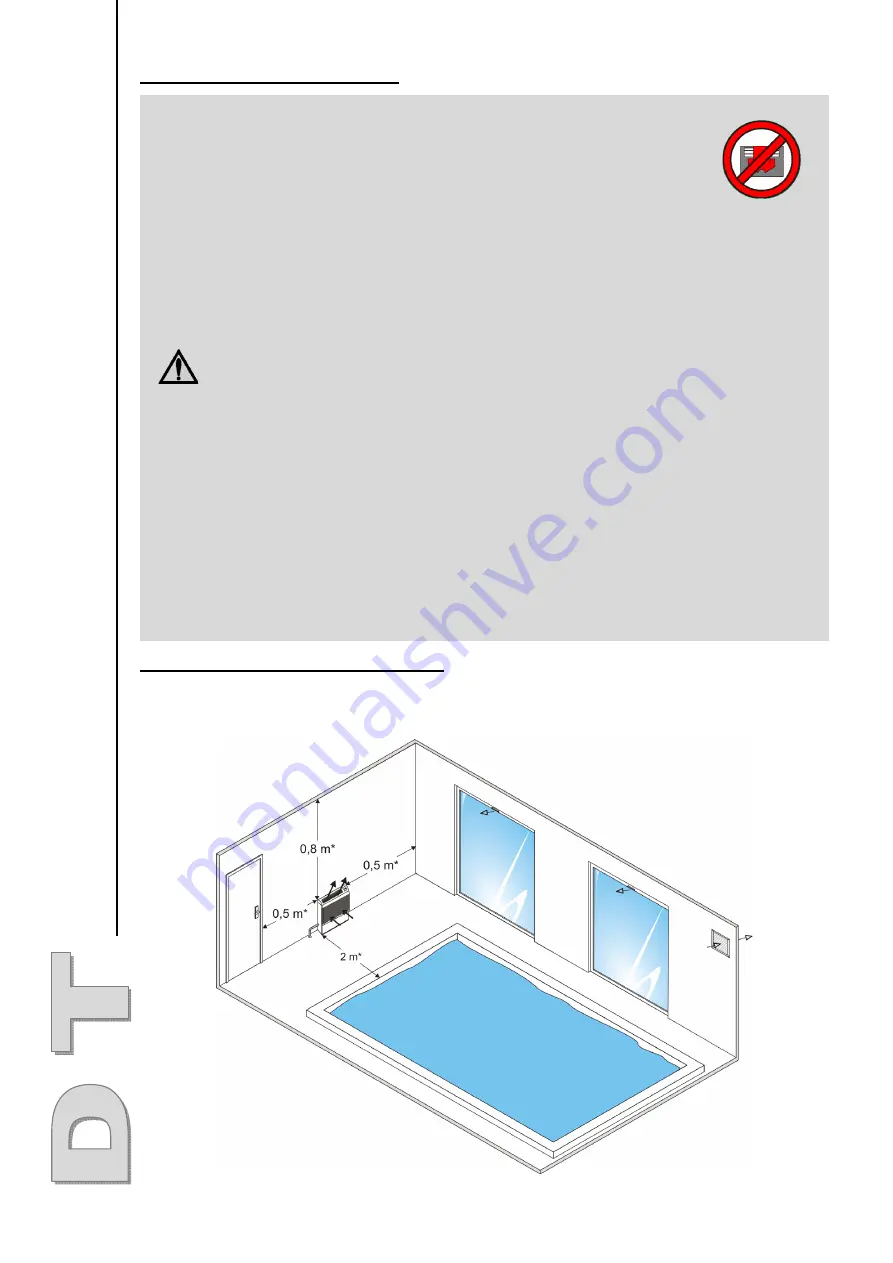
5
1.3.2 Installation requirements
1.3.3 Connection to surrounding air
1.3.3.1 Appliance on the ground (or on a support)
Do not place the device right up against a wall (risk of vibration).
1)
Install the appliance on a level base,
to avoid any overflows from the condensation
tray,
2)
Easy access
to the appliance for maintenance and connections,
3)
Place nothing in front of or on the blowing and suction grates
,
4) For a
swimming pool building with a high ceiling or visible roof frame
:
- destratification of the upper layers of the room = one or several fans with PVC blades
or
an air extractor with fresh air intake.
Warning!
230 V AC appliances = must be outside volume 1 (see §1.3.1),
5)
Building requirements:
swimming pool building = very damp room
During building make sure that:
- the materials used are compatible with a swimming pool environment,
- the walls are sufficiently waterproofed and insulated to avoid condensation forming in the
room when relative humidity reaches 60 to 70%.
Light structure buildings (verandas, shelters...): there is no risk of deterioration of the
structure, even in case of dew as they are designed to support this (even with a relative
humidity of 70%)
6)
Risk of stratification:
- height of the room < 4 to 5 meters: mechanical ventilator unit or extractor,
- height of the room > 7 to 8 meters: ceiling fans with large blades,
7)
Ventilation,
renewal of air,
- private pools: highly recommended
- public pools: compulsory
The air can be renewed by:
- a simple mechanical ventilation unit,
- a wall or roof extractor with fresh air intakes.
This ventilation ensures the hygienic renewal of air, the removal of any chloramines
present in the air, and the elimination of excessively hot air, whilst contributing to the
dehumidification of the room.
Pool
* minimum distance
DT 850
suction grid
blowing grid
fresh air intake
condensation drainage with angle pipe
air renewal system (see §1.3.2)
Содержание DT 850
Страница 10: ...1 Electrical diagram DT 850...






























